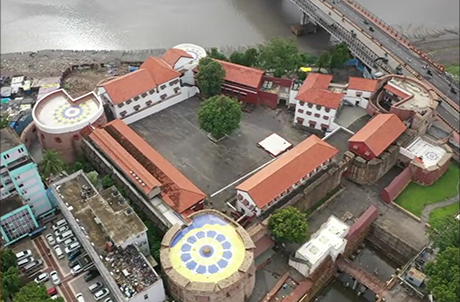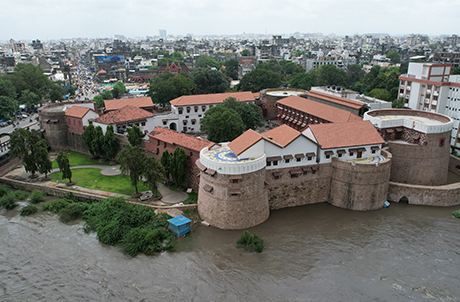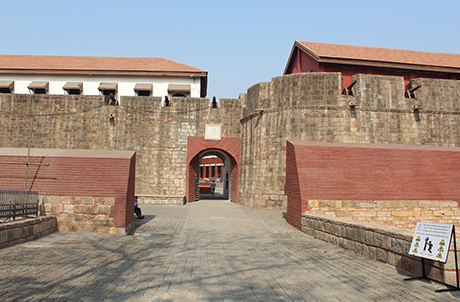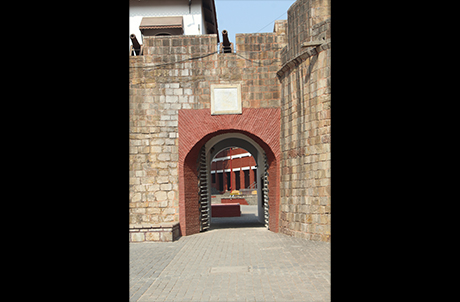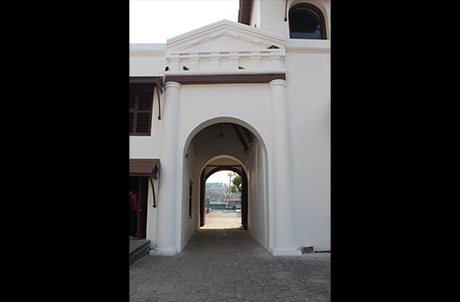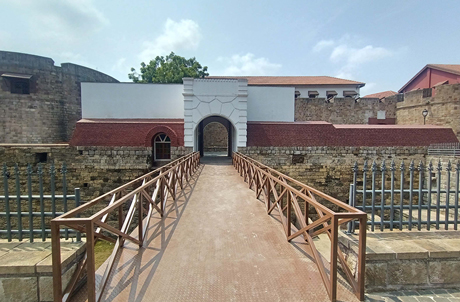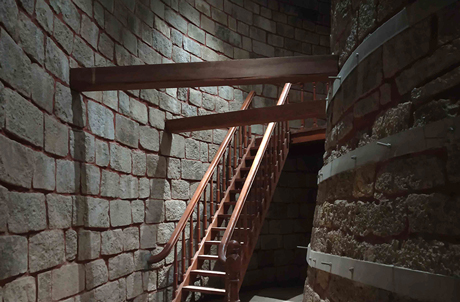Surat Fort
Introduction
The Historical Fort of Surat, inaugurated virtually by the Prime Minister of India on September 29, 2022, underwent a successful restoration process led by the Surat Municipal Corporation, as mandated by the Government of Gujarat in 2015. Initially constructed during the Tughlaq rule in 1372 CE, a more substantial fort emerged in 1546 AD under the direction of Turkish soldier Nazim Khwaja Safar Salmani, titled 'Khudavand Khan' by Gujarati Sultan Mahmud Shah III. Following the win over Surat by Emperor Akbar in 1573, the fort came under the control of commandants from Delhi until the Siddi admiral of the Mughal fleet seized it in 1751. The English captured the fort in 1759, although it nominally remained under Mughal authority.
Despite its historical significance, the fort fell into disrepair until the Gujarat Government assigned its restoration to the Surat Municipal Corporation in 2015, investing approximately Rs. 55 Crores. Over its 700-year history, the fort underwent alterations, and a composite restoration method was employed to highlight various construction styles, including Tughalaq, Gujarat Sultanate, Mughal, Dutch, and British styles. Notably, the fort played a crucial role in protecting rulers, citizens, and trade activities, safeguarding ships from 84 ports during its golden days. Today, it remains a unique subject of study with its diverse architectural elements, including six buildings, four burj, two partial burj, a moat, and a drawbridge, showcasing styles from different historical periods.
History
Surat, a significant medieval port, garnered international importance in world trade, as noted by Portuguese traveler Barbosa in 1514. Described as a bustling trade hub and crucial seaport, Surat faced adversity in 1512 when it was reportedly burnt by the Portuguese. Subsequent attacks under the leadership of Antonio da Silvaria in 1530 and 1531 further devastated the city, prompting Ahmedabad king Sultan Mahmud Shah III to commission the construction of a robust fortress in response to Portuguese aggression.
Safi Agha, titled Khudawand Khan, a Turkish soldier entrusted with the task, strategically selected three potential sites for the fort. Completed in a inspiration from Portuguese style, the fort had an irregular square plan, 20 Gaj (yard) high walls, and large round bastions at each corner with a height of 12.2 meters and a wall thickness of 4.1 meters. With a focus on defense against Portuguese attacks, Khudawand Khan fortified the structure by incorporating cannons and employed innovative construction methods, such as bonding masonry with iron strips and filling joints with melted lead.
However, during restoration, excavations revealed that a smaller fort existed during the Tughlaq dynasty (c. 1351-1388 A.D.), preceding the current structure. Over time, modifications occurred during the Sultanate period, Mughal rule, British occupation, and post-independence adjustments by various government entities. The fort's evolution mirrors the dynamic history of Surat, adapting to the needs of different rulers and administrations.
Feature
Constructed between 1540 and 1546 by Khudawand Khan, the historical fort in Surat is a prominent ancient monument situated on the bank of the Tapi River. Covering approximately one acre, the fort's irregular square plan features a short wing facing west and an oblique wing facing the north-west, bordered by the river. Each corner boasts a 12.2m high bastion, with curtain walls nearly matching their height and a thickness of 4.1m. The bastions' upper portions reflect Portuguese architectural inspiration.
Khudawand implemented strategic defense measures against Portuguese threats, importing cannons from Junagadh or, according to some accounts, Diu which were left there by Suleman Pasha who ran away from the battle field for Eden). To enhance the fort's strength, he employed innovative construction techniques, binding masonry units with iron strips and sealing joints with melted lead. This fortress, a testament to Surat's historical significance, stands as a resilient structure embodying both architectural and defensive prowess against external aggressors.
It has been reported that in order to counteract the attacks of the Portuguese, Khudawand made adequate defence arrangements for installing the cannons which were brought by him from Junagadh (Some other historical accounts quote that he had brought the cannons from Diu, which were left there by Suleman Pasha who ran away from the battle field for Eden). Since the king wanted to build a very strong castle, all the component units of the masonry were bonded or fastened together with iron strips and the joints were filled-in by pouring the melted lead.
The fort's eastern gateway, a pinnacle of defensive architecture, showcases meticulous design to ensure maximum safety. Located on the eastern wing, the gateway boasts a massive structure with robust door shutters featuring exterior spikes for added security. The interior facade is adorned with decorative architectural elements. Mulla Mohammed Ashrawadi, in his commendation of the castle, attributes its remarkable splendor and beauty to the grace of the Almighty. He expresses confidence in the fortress, likening it to a mountain that would steadfastly withstand Portuguese attacks. Following Khudawand Khan's fortification efforts, Surat experienced minimal Portuguese raids, marking a notable reduction in hostilities, with only sporadic small encounters disrupting the castle's resilient defense.
Upon scrutinizing original documentary evidence against the present state, the fort reveals numerous modifications, notably the moat—a landward ditch 18.30m wide and an 18.30m high curtain. Originally it was lined with bricks and stones in lime mortar, the moat, connected to the river, automatically filled with water. The main entrance featured a distinctive drawbridge, observed by travelers until the late 17th century. Restoration efforts re-excavated the moat and reinstated the hydraulic drawbridge, however the restored moat is not connected with river now.
An additional noteworthy feature emerged during restoration—finding of the cavity between the Tughlaq fortification's outer wall (1372) and the Sultanate fortification, exposing the original surface. Preserving both layers, the outer wall from 1372 and the Sultanate addition, illustrates fortification expansion during the Sultanate period to reinforce the structure. These features, unveiled through meticulous restoration, contribute to the castle's historical significance, offering visitors a glimpse into its evolving construction
